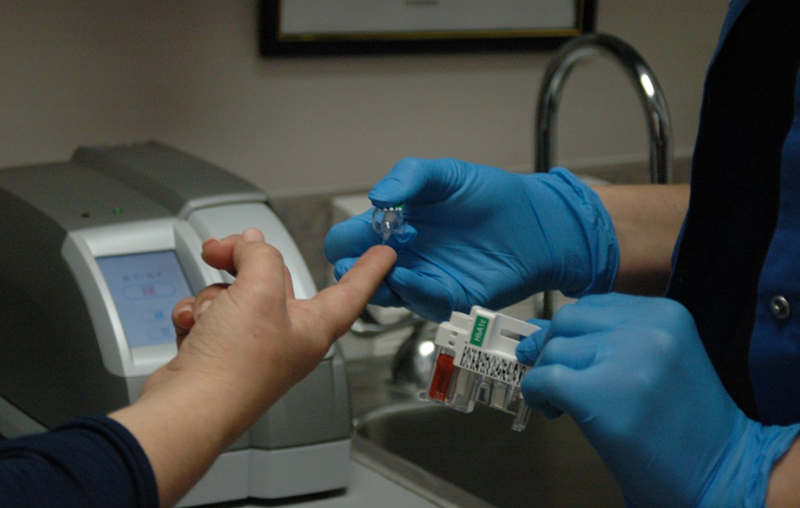For diabetics, managing their blood glucose is crucial in order to prevent diabetes-related complications such as heart attacks, blindness and coma. However, managing diabetes can be a tough work. Current methods for checking blood glucose requires needles or a finger prick. Now, researchers from the University of Missouri School of Medicine and the Massachusetts Institute of Technology has developed a non-invasive method that uses laser to monitor blood glucose. A recent study they conducted on their new method found it to be as effective as a finger prick test.
For their study titled “Evaluation of accuracy dependence of Raman spectroscopic models on the ratio of calibration and validation points for non-invasive glucose sensing,” researchers recruited 20 healthy, non-diabetic adults.
Researchers measured the blood glucose of all 20 individuals. Then the participants were given a glucose-rich beverage to drink. Their blood glucose levels were then measured in intervals over the next 160 minutes using three methods: spectroscopy, IV blood test and finger prick. These tests are designed to determine how much glucose remains in the blood and if a patient’s insulin-controlling mechanisms are functioning effectively. The research team discovered that spectroscopy predicted glucose values as accurately as a finger prick test, reports ECN Mag.

“Currently, blood glucose levels are tested through a finger prick or intravenously. The approach we studied is noninvasive and uses a laser to monitor glucose levels in the skin,” said Anandhi Upendran, PhD, director of biomedical innovations at the MU School of Medicine Institute for Clinical and Translational Science and co-author of the study. “With diabetes on the rise, the development of an accurate, efficient and inexpensive alternative method to test blood glucose levels is an urgent clinical need.”
The new device, called Raman spectroscopy, was developed by MIT researchers. It measures the chemical composition of skin and extract the amount of glucose out of other skin compartments. A laser light is then passed through a fiberoptic cable attached to a wristband and onto the skin. The laser light detects different components in the skin, such as fat tissue, protein, collagen and glucose molecules. The shifts in wavelengths associated with glucose present in the blood creates a sort of molecular fingerprint that can be used to determine glucose levels.
Jeon Woong Kang, PhD, research scientist with MIT’s Laser Biomedical Research Center and co-author of the study said that they’ve been pioneering this technology for more than 20 years. “We know that handheld skin prick tests are not always accurate and may be uncomfortable for patients. The gold standard is intravenous blood testing, but frequent blood draws may not be an option for many patients. We were pleased to find that our initial results show Raman spectroscopy can measure glucose levels that are comparable to the finger stick devices. We hope that we can refine this method to be a noninvasive continuous glucose monitoring sensor,”Dr. Kang said.












